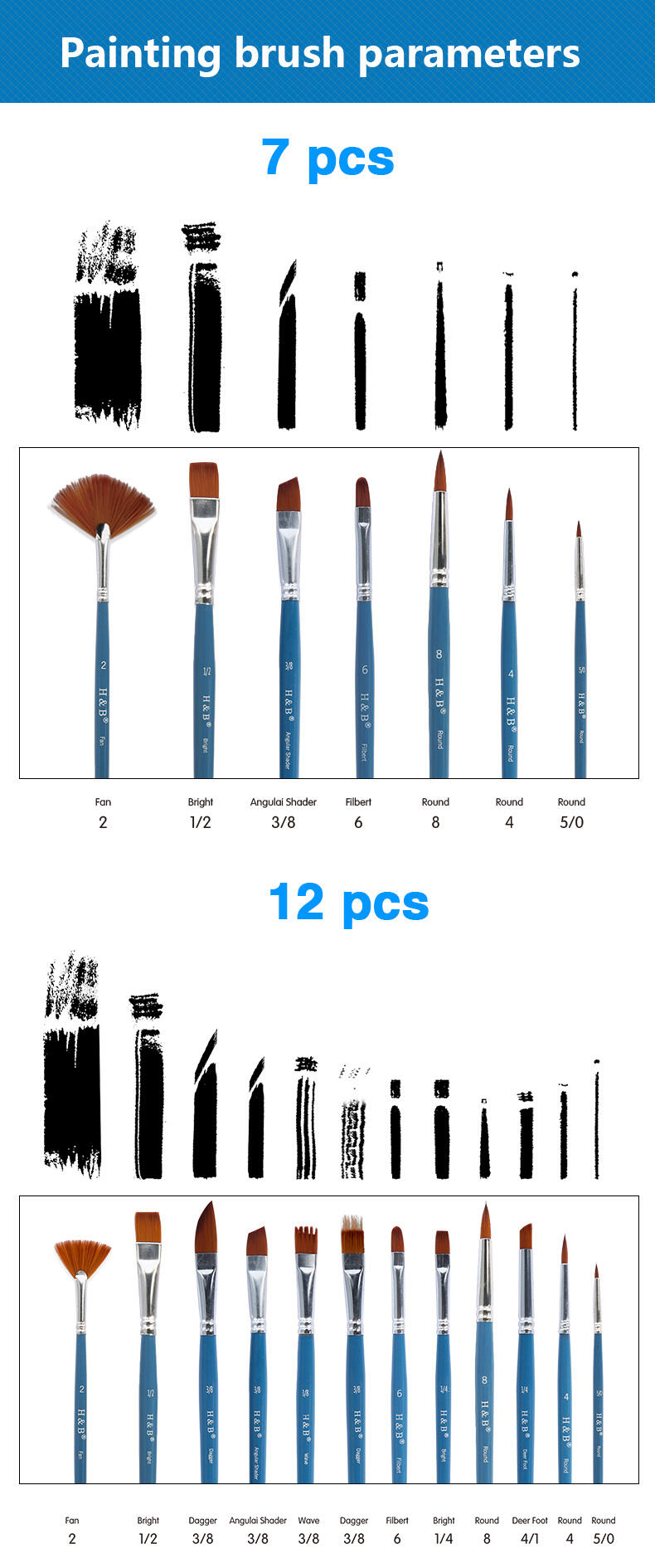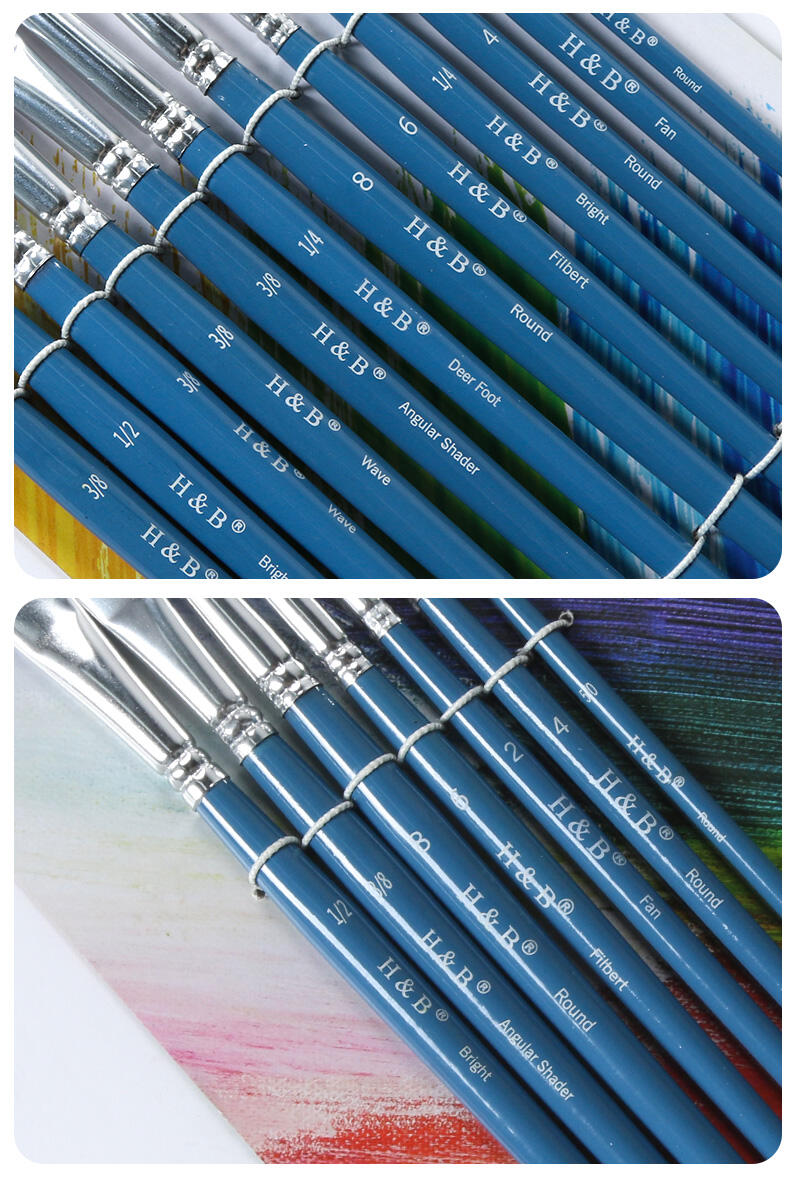Mastering Smooth Acrylic Paint Application
Achieving a flawless, stroke-free finish in acrylic painting is an art that combines proper technique, the right materials, and understanding of paint behavior. Whether you're creating portraits, landscapes, or abstract pieces, visible brush strokes can either enhance or detract from your artwork depending on your intended style. Many artists struggle to avoid brush strokes when painting with acrylics, but with the right approach and tools, you can create beautifully smooth surfaces that rival the finish of professional artwork.
The key to eliminating unwanted brush strokes lies in multiple factors: paint consistency, brush selection, application technique, and working conditions. By mastering these elements, you'll be able to achieve the smooth, professional results you desire while maintaining the versatility and convenience that makes acrylic paint so popular among artists.
Essential Tools and Materials
Selecting the Right Brushes
The foundation of stroke-free acrylic painting begins with choosing appropriate brushes. Soft synthetic brushes, particularly those made with taklon or nylon, are ideal for smooth application. These brushes hold their shape well and provide even distribution of paint across the surface. For large areas, opt for wide flat brushes or filberts, while smaller detail work may require round brushes with fine tips.
Quality matters significantly when selecting brushes. High-quality brushes maintain their shape, shed fewer bristles, and distribute paint more evenly. Look for brushes with seamless ferrules and responsive bristles that spring back to their original shape after use.
Paint Quality and Mediums
Professional-grade acrylic paints typically offer better flow and coverage than student-grade alternatives. They contain higher pigment loads and finer particle sizes, which contribute to smoother application. However, even with premium paints, you'll want to consider using appropriate mediums to enhance flow characteristics.
Acrylic flow improvers, glazing mediums, and retarders can significantly impact your ability to avoid brush strokes. These additives extend working time and improve paint flow, allowing for better blending and smoother application. Consider keeping a selection of mediums on hand to modify paint consistency as needed for different techniques.

Proper Paint Consistency and Preparation
Achieving Optimal Viscosity
Paint consistency plays a crucial role in creating smooth surfaces. Too thick, and brush strokes become more pronounced; too thin, and coverage suffers. The ideal consistency should be similar to heavy cream - fluid enough to flow from the brush but thick enough to provide good coverage.
To achieve the right consistency, gradually add water or medium to your paint, mixing thoroughly until you reach the desired flow. Remember that different techniques may require different consistencies, so be prepared to adjust as needed for various effects.
Surface Preparation
A well-prepared surface is essential for smooth paint application. Start with properly primed canvas or board, ensuring the surface is clean and free from dust or debris. Some artists prefer to sand between layers using fine-grit sandpaper to eliminate any texture from previous applications.
Consider applying a base coat or underpainting using thin, smooth layers. This creates a foundation that helps subsequent layers glide on more smoothly and can reduce the visibility of brush strokes in your final piece.
Advanced Application Techniques
Layering Methods
Working in thin layers is one of the most effective ways to avoid brush strokes when painting with acrylics. Begin with diluted paint for initial layers, gradually building up to more opaque applications. Allow each layer to dry completely before applying the next to prevent lifting and texture formation.
Cross-hatching technique, where you apply paint in alternating directions between layers, can help eliminate visible brush strokes. This method ensures even coverage and helps create a smooth, unified surface.
Brush Control and Movement
The way you handle your brush significantly impacts the appearance of brush strokes. Use light, consistent pressure and maintain a steady hand speed when applying paint. Load your brush adequately but not excessively - overloaded brushes can create unwanted texture and uneven application.
Practice making long, continuous strokes rather than short, choppy ones. When possible, try to complete areas in single strokes, working wet-into-wet to promote better blending and smoother transitions between colors.
Environmental Considerations
Temperature and Humidity Control
Acrylic paint drying time is significantly affected by environmental conditions. Working in a controlled environment with moderate temperature and humidity helps maintain optimal working time. Too much heat or low humidity can cause paint to dry too quickly, making it difficult to achieve smooth transitions.
Consider using a retarding medium in warm conditions or when working on larger pieces that require extended blending time. Maintain consistent room temperature and avoid working in direct sunlight or near fans that can accelerate drying.
Workspace Organization
An organized workspace contributes to better painting results. Keep your palette clean and well-arranged, with adequate space for mixing colors and modifying consistency. Have water and mediums readily available to adjust paint flow as needed during your session.
Good lighting is essential for seeing brush strokes as you work. Natural, indirect light or proper studio lighting helps you identify areas that need attention before the paint dries.
Frequently Asked Questions
Why do brush strokes show up more prominently in some colors than others?
Different pigments have varying particle sizes and properties that affect how they level out during drying. Darker colors and those with larger pigment particles tend to show brush strokes more readily. Using appropriate mediums and proper technique becomes especially important when working with these colors.
How long should I wait between layers to avoid lifting previous paint?
While acrylic paint feels dry to the touch within minutes, it's best to wait 15-20 minutes between layers to ensure adequate drying. For thick applications or when using retarding mediums, you may need to wait longer. Testing an inconspicuous area can help determine if the previous layer is sufficiently dry.
Can I sand out brush strokes after the paint has dried?
Yes, you can carefully sand dried acrylic paint using fine-grit sandpaper (320 grit or higher) to reduce visible brush strokes. However, be gentle to avoid removing too much paint, and always clean the surface thoroughly before applying new layers. This technique works best as part of a planned process rather than a correction method.


